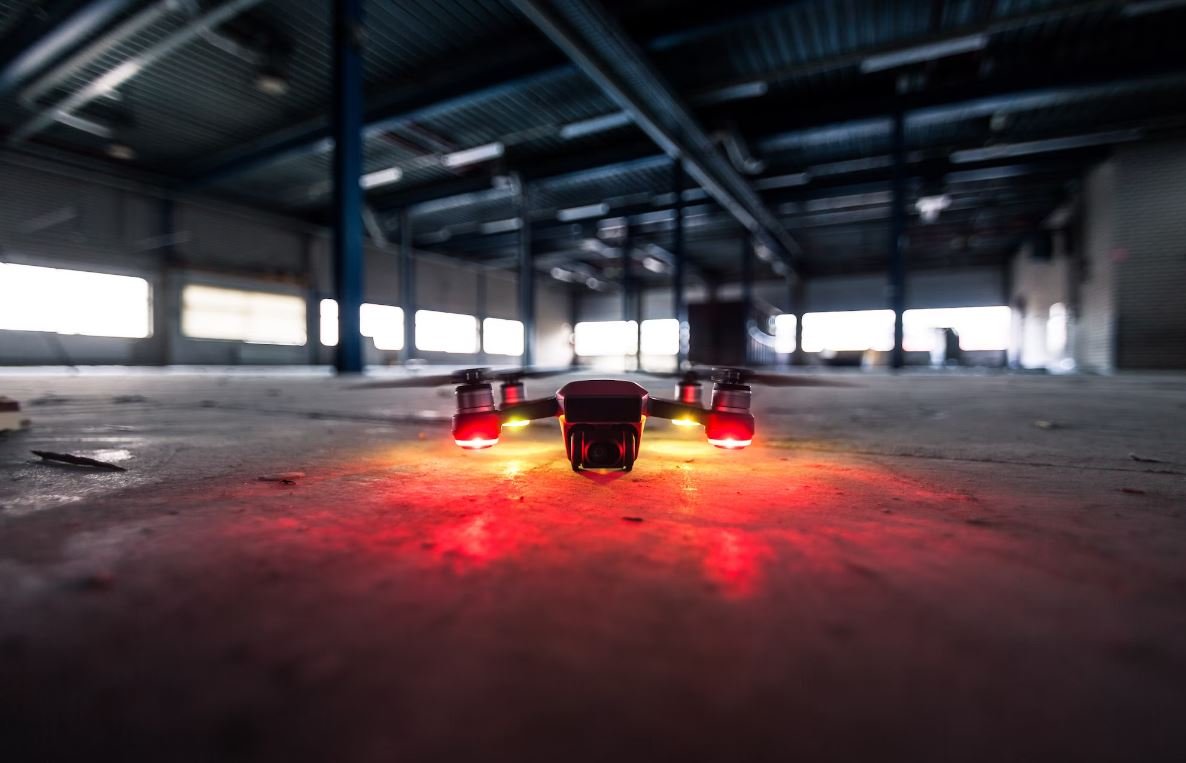What Is Tracks in SHS?
Tracks in Senior High School (SHS) refer to the specialized strands or programs that students can choose from in their final two years of secondary education in the Philippines. These tracks provide students with the opportunity to focus on subjects and skills that align with their interests and career aspirations.
Key Takeaways:
- Tracks in SHS are specialized strands or programs that students can choose from in their final two years of secondary education.
- They allow students to focus on subjects and skills related to their interests and future career goals.
- The four tracks in SHS are Academic, Technical-Vocational-Livelihood, Sports, and Arts and Design.
Understanding Tracks in SHS
In SHS, students have the option to select a particular track that aligns with their interests and career aspirations. Each track consists of a set of subjects and competencies that students will study and master. This system aims to provide students with a more targeted and specialized education that prepares them for their chosen career paths.
The Academic Track focuses on traditional academic subjects and is intended for students who plan to pursue college education. It offers three strands: Accountancy, Business, and Management (ABM); Humanities and Social Sciences (HUMSS); and Science, Technology, Engineering, and Mathematics (STEM). *Students in the Academic Track develop a strong foundation in their chosen strand through a variety of subjects and relevant activities.*
The Technical-Vocational-Livelihood (TVL) Track equips students with technical and vocational skills that can lead to immediate employment or entrepreneurship opportunities after graduation. It offers various strands, such as Agri-Fishery Arts, Home Economics, Industrial Arts, and Information and Communication Technology. *Students in the TVL Track have the opportunity to gain practical hands-on experience in fields related to their chosen strand.*
| Track | Strands |
|---|---|
| Academic |
|
| Technical-Vocational-Livelihood (TVL) |
|
The Sports Track focuses on developing the athletic skills of students who have a passion for sports. It provides opportunities for training, competition, and overall physical development. *Students in the Sports Track have access to specialized sports facilities and training programs.*
The Arts and Design Track caters to students who possess artistic talents and interests. It allows them to enhance their creativity and express themselves through various art forms. *Students in the Arts and Design Track have the chance to showcase their talents through exhibitions and performances.*
| Track | Description |
|---|---|
| Academic | The Academic Track focuses on traditional academic subjects for college preparation. |
| Technical-Vocational-Livelihood (TVL) | The TVL Track equips students with technical and vocational skills for immediate employment or entrepreneurship. |
| Sports | The Sports Track focuses on developing athletic skills and physical development. |
| Arts and Design | The Arts and Design Track enhances creativity and artistic expressions. |
Advantages of Choosing a Track
Opting for a specific track in SHS offers several benefits for students. Firstly, it helps them develop specialized knowledge and skills in their chosen field, giving them a competitive advantage when pursuing further education or entering the workforce. *Additionally, focusing on a particular track allows students to explore their passions and interests, fostering personal growth and fulfillment.*
Moreover, choosing a track provides students with a clearer direction and purpose in their educational journey. It allows them to tailor their learning experience to match their future goals, helping them make informed decisions about their career paths. *By selecting a track, students gain a deeper understanding of their strengths and areas of improvement, enabling them to make more informed choices.*
Overall, tracks in SHS play a crucial role in shaping the future of students. They provide a structured and focused approach to education, enabling students to pursue their passions, develop essential skills, and prepare for their desired careers. *By offering a range of options, SHS ensures that students receive a well-rounded education that aligns with their unique abilities and aspirations.*
Conclusion
Choosing a track in SHS is a significant decision for students as it sets the foundation for their future academic and career paths. By providing specialized strands in various fields, SHS equips students with the knowledge and skills necessary to excel in their chosen fields. Whether students choose the Academic, Technical-Vocational-Livelihood, Sports, or Arts and Design Track, they can expect an enriching and focused educational experience that will pave the way for their future success.

Common Misconceptions
Misconception 1: Tracks limit future career options
One common misconception about tracks in Senior High School (SHS) is that they limit future career options for students. However, this is not true. While tracks provide students with a focused curriculum that aligns with specific career paths, they still offer a broad range of subjects and skills that can be applied in various fields.
- Tracks provide a solid foundation and specialized knowledge in a particular field.
- Acquired skills and knowledge can be transferred to related career paths if desired.
- Students can pursue further specialization or change tracks in higher education if needed.
Misconception 2: Tracks are only for students who have decided on their career path
Another misconception is that tracks should only be chosen by students who have already determined their desired career paths. On the contrary, tracks are designed to help students explore different fields and make informed decisions about their future.
- Tracks provide students with exposure to various subjects and industries.
- They allow students to assess their interests, strengths, and aptitudes.
- Students can change tracks within a certain period if they discover new passions or interests.
Misconception 3: Certain tracks are superior to others
It is a misconception that certain tracks are superior to others in terms of value or job prospects. All tracks are equally important and relevant, depending on an individual’s interests and goals. Every career path has its own unique set of opportunities and challenges.
- All tracks offer valuable skills and knowledge to prepare students for their chosen fields.
- The suitability of a track depends on an individual’s personal interests and strengths.
- Job prospects can be equally promising across different tracks, based on market demand and individual capabilities.
Misconception 4: Tracks limit social interaction between students
Some individuals mistakenly believe that tracks limit social interaction among students since they are divided into different classes. However, this is not necessarily the case. While tracks may have separate classes for specific subjects, there are still opportunities for students across different tracks to interact and collaborate.
- Students from different tracks often come together for general education subjects or extracurricular activities.
- Track-specific projects and activities provide opportunities for cross-track collaboration and teamwork.
- Interactions and friendships can be formed through common interests outside of academic settings.
Misconception 5: Students are locked into their chosen tracks forever
Lastly, a misconception is that once students choose a track, they are locked into it for the rest of their academic journey. The reality is that students have flexibility and options to further specialize or change tracks even after selecting a particular one during SHS.
- Higher education institutions often offer programs that allow students to switch tracks or specialize in different fields.
- Students can explore interdisciplinary approaches or pursue further education within their chosen tracks.
- Finding a career path is a lifelong journey, and changing tracks should always be seen as a possibility.

Introduction
In this article, we will explore the concept of tracks in SHS (Secondary High School) education. Tracks refer to different specialized strands or paths that students can choose from based on their interests and career aspirations. These tracks offer a focused curriculum designed to provide students with the necessary skills and knowledge for their chosen fields. Each track opens up various opportunities and gives students a chance to excel in their preferred areas. Let’s delve into the different tracks in SHS and discover their unique features and advantages.
Track 1: STEM (Science, Technology, Engineering, and Mathematics)
The STEM track is geared towards students who have a passion for scientific exploration, problem-solving, and innovation. It focuses on developing skills and knowledge in fields such as biology, chemistry, physics, computer science, mathematics, and engineering. Students in this track often thrive in laboratory settings and enjoy hands-on experiments and projects.
Track 2: Arts and Humanities
The Arts and Humanities track is designed for students who have a strong inclination towards creativity, expression, and cultural appreciation. It offers subjects such as literature, visual arts, music, dance, theater, and philosophy. This track encourages students to explore their artistic talents, develop critical thinking skills, and appreciate various art forms.
Track 3: Business and Entrepreneurship
The Business and Entrepreneurship track is ideal for students who have an interest in the world of business, finance, and entrepreneurship. It introduces students to concepts such as economics, marketing, accounting, finance, and management. This track equips students with the necessary skills to create and manage their own business ventures.
Track 4: Social Sciences
The Social Sciences track caters to students who have a keen interest in understanding human behavior, society, and its various aspects. Subjects in this track include psychology, sociology, anthropology, political science, and history. This track encourages students to analyze and interpret complex social issues and contribute to the betterment of society.
Track 5: Health and Allied Sciences
The Health and Allied Sciences track prepares students for careers in the medical and healthcare fields. It covers subjects such as biology, chemistry, anatomy, physiology, pharmacology, and medical laboratory science. Students in this track develop a solid foundation in scientific knowledge and gain hands-on experience in healthcare settings.
Track 6: Information and Communication Technology (ICT)
The Information and Communication Technology track focuses on developing students’ skills in technology, computer programming, software development, data analysis, and network systems. This track equips students with the knowledge to navigate the digital world and prepares them for careers in fields such as software engineering, web development, and data analytics.
Track 7: Sports and Physical Education
The Sports and Physical Education track is designed for students who have a passion for sports, physical fitness, and leading an active lifestyle. It offers subjects such as physical education, sports science, sports management, and coaching. This track provides students with the opportunity to excel in various sports and pursue careers in sports-related fields.
Track 8: Culinary Arts and Hospitality Management
The Culinary Arts and Hospitality Management track caters to students who have a passion for the culinary arts, food preparation, and the hospitality industry. It offers subjects such as cooking techniques, menu planning, restaurant management, and hotel operations. This track equips students with the skills to thrive in the culinary and hospitality sectors.
Track 9: Media and Communication
The Media and Communication track focuses on developing students’ skills in journalism, broadcasting, advertising, public relations, and digital media. It encourages students to be effective communicators and provides them with opportunities to gain experience in media production, content creation, and story development.
Track 10: Agriculture and Fisheries
The Agriculture and Fisheries track is designed for students who have an interest in agricultural science, animal husbandry, fisheries, and sustainable farming practices. It offers subjects such as crop production, livestock management, aquaculture, and agricultural economics. This track prepares students for careers in agricultural research, farming, and environmental conservation.
Conclusion
Tracks in SHS provide students with specialized educational pathways that align with their interests and career aspirations. These tracks offer focused instruction and practical experiences to equip students with the necessary skills and knowledge for their chosen fields. Whether students excel in STEM, arts, business, or other areas, these tracks cater to their unique strengths and help them achieve their goals. SHS tracks broaden students’ horizons, encourage exploration, and pave the way for a fulfilling and successful future.
What Is Tracks in SHS?
Question 1: What is the purpose of Tracks in SHS?
Tracks in SHS is a system designed to offer specialized academic pathways for high school students. The purpose is to provide students with an opportunity to focus their studies on specific areas of interest, develop relevant skills, and prepare for their future career or further education.
Question 2: How does the Tracks program work?
The Tracks program allows students to choose a specific track, such as STEM (Science, Technology, Engineering, and Mathematics), Arts, Business, or Humanities. Once a track is selected, students will take a set of courses tailored to that particular area, ensuring a focused and comprehensive learning experience.
Question 3: Can students switch tracks?
Yes, students may have the option to switch tracks, depending on the policies and guidelines set by the educational institution. However, it is generally recommended that students carefully consider their interests and goals before committing to a specific track.
Question 4: How does Tracks benefit students?
Tracks in SHS offers several benefits to students. It allows them to explore their passions and interests in-depth, gain knowledge and skills relevant to their desired career paths, and make informed decisions about their future academic or professional pursuits.
Question 5: Are all tracks equally valued?
While the value and demand for different tracks may vary, each track provides unique opportunities and can be valuable depending on an individual’s goals. It is important to choose a track based on personal interests, strengths, and career aspirations.
Question 6: Can students take courses from multiple tracks?
Depending on the educational institution’s policies, students might have the flexibility to take courses from multiple tracks. This can be beneficial for those who have interdisciplinary interests and want to combine knowledge and skills from different areas.
Question 7: Are there any prerequisites for joining a specific track?
The prerequisites for joining a specific track can vary. Some tracks may require certain academic achievements or completion of specific courses, while others may have no prerequisites. It is advisable to review the requirements set by the institution offering the Tracks program.
Question 8: How can Tracks in SHS help students in college admissions?
Choosing a track and excelling in it can demonstrate a student’s commitment to a particular field of study, showcasing their passion and dedication. This can positively impact college admissions by highlighting the student’s focused academic journey and setting them apart from their peers.
Question 9: Can students pursue a track even if it is not related to their intended college major?
Absolutely! While it can be advantageous to align a track with a future college major, pursuing a track unrelated to one’s intended major can still provide valuable knowledge, skills, and experiences. It allows for exploration, personal growth, and the development of well-rounded individuals.
Question 10: Can Tracks in SHS lead to career opportunities?
Yes, Tracks in SHS can help students develop foundational knowledge and skills that align with different career paths. The specialization gained in a particular track can open doors to internships, scholarships, and job opportunities in related fields.




